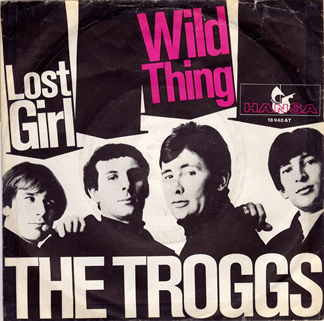 1967 was a year of sonic experimentation, cultural upheaval, and musical innovation. It was the Summer of Love, a time when the counterculture was blossoming and rock music was evolving into something far more complex and expressive. In that year, a song emerged that would become one of the defining tracks of the era: “Sunshine of Your Love” by Cream. With its irresistible riff, bluesy swagger, and raw psychedelic energy, the song not only cemented Cream’s place in rock history but also helped shape the sound of late 1960s rock. It is a track that combines technical brilliance with emotional resonance, a testament to the talents of Eric Clapton, Jack Bruce, and Ginger Baker—the trio who redefined what a rock band could accomplish.
1967 was a year of sonic experimentation, cultural upheaval, and musical innovation. It was the Summer of Love, a time when the counterculture was blossoming and rock music was evolving into something far more complex and expressive. In that year, a song emerged that would become one of the defining tracks of the era: “Sunshine of Your Love” by Cream. With its irresistible riff, bluesy swagger, and raw psychedelic energy, the song not only cemented Cream’s place in rock history but also helped shape the sound of late 1960s rock. It is a track that combines technical brilliance with emotional resonance, a testament to the talents of Eric Clapton, Jack Bruce, and Ginger Baker—the trio who redefined what a rock band could accomplish.
Cream: The First Supergroup
Cream wasn’t just another band; they were the first recognized “supergroup,” formed in London in 1966. Comprised of Eric Clapton on guitar, Jack Bruce on bass and vocals, and Ginger Baker on drums, Cream brought together three virtuosos, each with a distinct musical personality. Clapton had already earned his reputation with the Yardbirds and John Mayall & the Bluesbreakers, Bruce was a classically trained musician with a penchant for jazz and blues, and Baker was a drummer known for his explosive technique and jazz sensibilities.
By the time Sunshine of Your Love was recorded in 1967 for their album Disraeli Gears, Cream had honed a sound that combined blues roots with a burgeoning psychedelic sensibility. The trio’s chemistry allowed them to push boundaries, blending improvisational jams with structured songwriting, and their live performances became legendary for extended solos and near-telepathic interplay.
The Riff That Changed Everything
At the heart of Sunshine of Your Love is one of the most iconic riffs in rock history. Eric Clapton’s guitar opens with a descending, minor-key motif that is both instantly recognizable and deeply compelling. The riff is deceptively simple—it’s catchy, groove-heavy, and perfect for a sing-along—but it also carries a hypnotic quality that pulls listeners in immediately.
The brilliance of the riff lies in its balance between blues sensibility and psychedelic experimentation. Clapton employs a slightly overdriven tone, giving it a raw edge without sacrificing clarity. The riff is repeated throughout the song, serving as both a rhythmic anchor and a melodic hook, proving that a great riff can carry an entire composition.
What makes it even more remarkable is how the riff interacts with Jack Bruce’s bass and Ginger Baker’s drums. Bruce’s bass line isn’t merely following the guitar—it weaves in and out, adding counterpoint and harmonic depth. Baker’s drumming, meanwhile, is explosive yet precise, accentuating the groove while adding rhythmic complexity that elevates the track from a simple blues-rock number to a sophisticated musical statement.
Lyrics and Psychedelic Imagery
Jack Bruce’s lyrics for Sunshine of Your Love, co-written with poet Pete Brown, complement the song’s hypnotic musical structure. Unlike the abstract psychedelia that would dominate the late 1960s, these lyrics are simple, direct, and evocative. Lines like:
“It’s getting near dawn, when lights close their tired eyes
I’ll be with you, darling, soon, I’ll be with you”
capture a romantic longing that is both universal and timeless. The imagery of sunlight and love creates a warm, almost tangible atmosphere, grounding the psychedelic instrumentation in human emotion.
The chorus—“I’ve been waiting so long / To be where I’m going / In the sunshine of your love”—is hypnotic, repetitive, and undeniably singable. It reinforces the song’s emotional core while providing a melodic release that contrasts beautifully with the darker, bluesy riff. The combination of lyrical simplicity and musical complexity is part of what makes the song endure; it’s emotionally accessible without sacrificing artistic sophistication.
Cream’s Musical Alchemy
What sets Sunshine of Your Love apart is the way Cream blends elements of blues, rock, and psychedelia into a single, cohesive sound. The song is firmly rooted in the blues, with Clapton’s guitar phrasing and Bruce’s vocal delivery paying homage to the genre’s greats. Yet there’s a modern sensibility at play—the production is crisp, the arrangement tight, and the improvisational elements controlled, giving it a contemporary edge.
The song also foreshadows hard rock and heavy metal with its power-chord-driven structure and the weight of its guitar tone. While it retains a danceable groove, it also exudes a sense of menace and urgency, a combination that would influence countless rock bands in the years to come. Cream proved that rock music could be both cerebral and visceral, and Sunshine of Your Love became the perfect vehicle for that duality.
The Guitar Solo: A Masterclass in Restraint and Expression
Eric Clapton’s guitar solo in Sunshine of Your Love is a study in balance. Unlike some of his later work that leans toward flamboyant technicality, this solo is measured, melodic, and perfectly suited to the song’s mood. Clapton’s phrasing alternates between bluesy bends and rapid-fire licks, building tension before resolving it with satisfying clarity.
The solo demonstrates Clapton’s mastery of space and dynamics. He doesn’t overwhelm the listener with speed; instead, he uses silence, sustain, and subtle variations in tone to create drama. It’s a reminder that virtuosity isn’t just about playing fast—it’s about serving the song, and here, every note contributes to the overall emotional impact.
Production and Sonic Texture
Produced by Felix Pappalardi, Sunshine of Your Love benefits from a rich, layered sound that enhances its hypnotic qualities. The mix emphasizes the interplay between instruments: the bass is prominent without overpowering, the drums are punchy but nuanced, and Clapton’s guitar sits perfectly in the sonic space.
The production also captures the energy of Cream’s live performances. There’s a rawness and immediacy that makes the track feel alive, as if the band is jamming in the room with the listener. This approach was particularly important in 1967, when recording technology was still evolving and capturing the spontaneity of a band in the studio required both skill and intuition.
Cultural and Musical Impact
Upon its release, Sunshine of Your Love quickly became a hit, reaching No. 5 on the Billboard Hot 100 in the United States and securing Cream’s status as one of the leading rock bands of the 1960s. Its impact extended beyond commercial success; the song influenced a generation of musicians, from blues-rock guitarists to emerging hard rock bands.
The track also played a pivotal role in popularizing the power trio format. While bands like The Jimi Hendrix Experience had already demonstrated the potential of three-member groups, Cream showed that a trio could deliver complex, multi-layered music without additional instrumentation. The balance between guitar, bass, and drums became a blueprint for countless rock bands in the decades that followed.
Live Performances and Enduring Appeal
Cream’s live performances of Sunshine of Your Love elevated the song to legendary status. On stage, the trio often extended the track into improvisational jams, showcasing their musicianship and the chemistry between members. Clapton’s guitar solos would stretch and twist, Bruce’s vocals would soar, and Baker’s drumming would explode with intricate fills, transforming the studio version into a dynamic, ever-evolving live experience.
These live renditions reinforced the song’s reputation as a cornerstone of 1960s rock. Fans came to expect extended instrumental sections, and the interplay between band members became a highlight of their concerts. Even decades later, the song remains a staple of classic rock radio and a favorite at covers and tribute performances.
Why “Sunshine of Your Love” Endures
Several factors contribute to the enduring appeal of Sunshine of Your Love. Its memorable riff is instantly recognizable, its groove is hypnotic, and its lyrics are emotionally resonant. Beyond that, it captures a moment in time: the mid-1960s, when rock was evolving rapidly, psychedelia was emerging, and bands were experimenting with both sound and form.
The song’s balance of technical skill, emotional depth, and accessibility ensures that it remains relevant. Guitarists study Clapton’s riff and solo for technique, music historians cite it as a defining example of 1960s rock, and casual listeners continue to enjoy its infectious energy. Few songs manage to bridge the gap between musical sophistication and mass appeal so seamlessly, but Sunshine of Your Love does so effortlessly.
The Legacy of Cream and the Power Trio
Cream’s influence extends far beyond a single song. They demonstrated that a trio could produce music that was complex, emotionally compelling, and commercially successful. Sunshine of Your Love embodies that ethos: it’s a song that rewards repeated listening, offering new discoveries in each instrumental layer while remaining accessible and enjoyable.
The track also helped cement Eric Clapton’s reputation as one of rock’s greatest guitarists, Jack Bruce as a masterful bassist and vocalist, and Ginger Baker as one of the most innovative drummers of his generation. Their collective talent, showcased in Sunshine of Your Love, set a standard for musicianship that continues to inspire new generations.
Final Thoughts
Sunshine of Your Love is more than a hit song; it’s a milestone in the history of rock music. Released in 1967, it captures the spirit of its era while remaining timeless in its appeal. Its iconic riff, masterful instrumentation, and evocative lyrics make it a benchmark for blues-rock and psychedelic music, demonstrating how a simple yet powerful idea can create a song that resonates for decades.
Cream achieved something extraordinary: a song that is musically sophisticated, emotionally engaging, and culturally significant, all at once. Sunshine of Your Love is not just a classic rock anthem—it’s a masterclass in songwriting, performance, and musical chemistry. Whether you’re a guitarist learning the riff for the first time, a music historian examining the evolution of rock, or a casual listener humming along to the chorus, the song continues to shine brightly, decades after its creation.
The sun still rises over rock music, and in that light, the warmth and brilliance of Cream’s Sunshine of Your Love endures.


